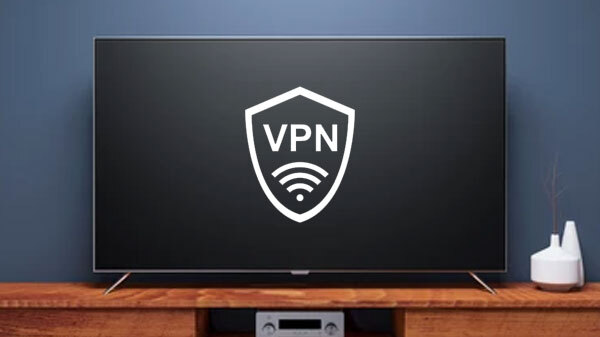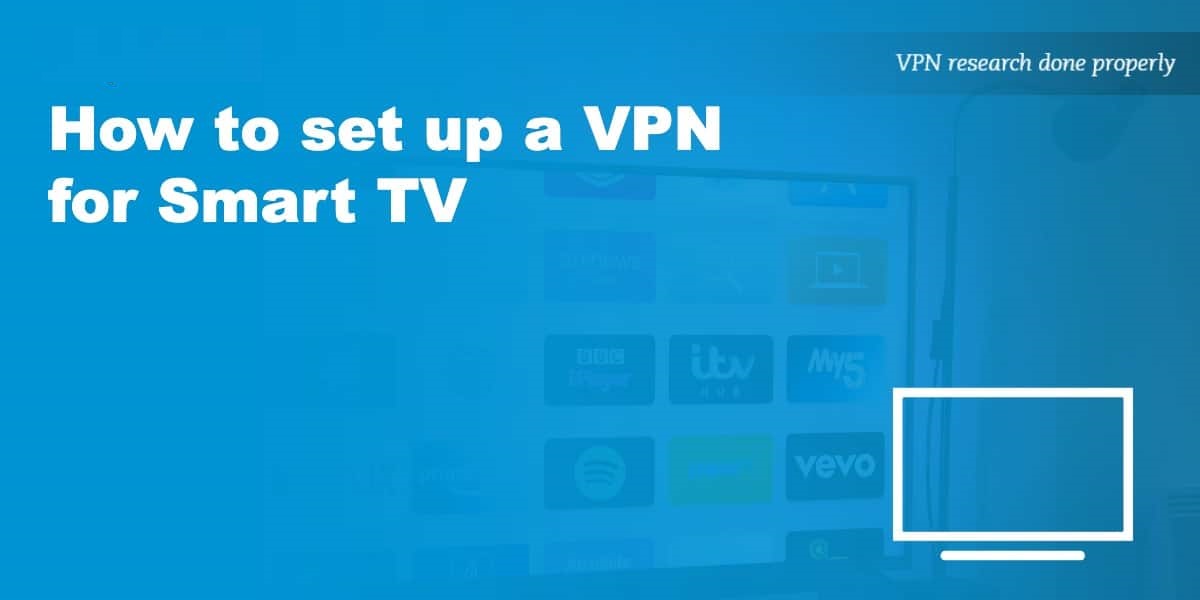In todays world streaming has become a daily activity for many of us whether youre watching your favorite Netflix series catching up on live sports or browsing YouTube the demand for content is endless. But sometimes georestrictions privacy concerns, or throttling by your Internet Service Provider (ISP) can ruin the streaming experience This is where a Virtual Private Network (VPN) comes into play.
Setting up and using a VPN on a Smart TV is not only possible but its also a game changer for privacy and accessing global content in this guide well walk you through the complete process of setting up a VPN on your Smart TV explain its benefits and address common errors and how to fix them.

Table of Contents
- What is a VPN and Why Do You Need It on a Smart TV?
- How to Set Up a VPN on a Smart TV
- Method 1: Using a VPN Enabled Router
- Method 2: Using a VPN App via Android TV
- Method 3: Using a VPN via Smart DNS
- Method 4: Using a VPN via PC or Mac Sharing
- Testing Your VPN Connection on the Smart TV
- Common Errors When Setting Up and Using a VPN on a Smart TV
- Error 1: Slow Internet Speed
- Error 2: VPN Disconnection Issues
- Error 3: Geo-Blocked Content Still Unavailable
- Error 4: App Compatibility Issues
- Best Practices for Using a VPN on Your Smart TV
- Conclusion
1. What is a VPN and Why Do You Need It on a Smart TV?
A Virtual Private Network (VPN) encrypts your internet connection and routes your data through secure servers making it harder for third parties to track your online activity for Smart TVs the benefits of using a VPN include:
- Access to Geo-Restricted Content: Many streaming services such as Netflix, Hulu, and BBC iPlayer, restrict certain shows and movies based on your geographical location a VPN can help bypass these restrictions by masking your IP address and allowing you to appear as if youre browsing from another country.
- Privacy and Security: A VPN shields your browsing habits from your ISP and potential hackers ensuring that your viewing data remains private.
- Bypass ISP Throttling: Some ISPs slow down internet speeds during streaming to save bandwidth. Using a VPN can prevent this by masking your activities from your ISP.
While VPNs have traditionally been used on laptops and smartphones more people are using them on Smart TVs as streaming continues to grow in popularity.
2. How to Set Up a VPN on a Smart TV
Setting up a VPN on a Smart TV may not always be as straightforward as installing an app on your phone, but there are various methods you can use the setup process depends on your Smart TVs model whether it runs on Android or a proprietary operating system like Samsungs Tizen or LG’s WebOS. Lets dive into four methods that will work for most Smart TVs.
Method 1: Using a VPN Enabled Router
One of the most effective ways to use a VPN on your Smart TV is by configuring your router to connect to a VPN this allows every device connected to the router, including your Smart TV to access the internet via the VPN.
Steps:
- Choose a VPN service that supports router setup popular VPNs like NordVPN, ExpressVPN and Surfshark offer this feature.
- Access your routers settings by typing its IP address into your browser youll typically find the IP address on a sticker on your router or in the user manual.
- Configure the VPN on your router. Most VPN providers will have detailed instructions for specific router models usually youll need to enter server addresses and your VPN login details.
- Connect your Smart TV to your router as usual once connected your TV will automatically use the VPN.
Pros:
- Covers all devices on your network.
- Works for Smart TVs that dont support VPN apps.
Cons:
- Can be complicated for non tech savvy users.
- Some routers may not support VPNs.
Method 2: Using a VPN App via Android TV
If your Smart TV runs on Android TV youre in luck because you can install a VPN app directly from the Google Play Store.
Steps:
- Sign up for a VPN service that offers an Android app.
- On your Smart TV go to the Google Play Store and search for your VPNs app (e.g., ExpressVPN or NordVPN).
- Install the app and log in using your VPN credentials.
- Choose a server from the list and connect.
- Test your connection by opening a streaming app and checking if content is accessible from another region.
Pros:
- Easiest method for Android TV users.
- Direct control over the VPN from your TV.
Cons:
- Limited to Android TV devices.
Method 3: Using a VPN via Smart DNS
Some Smart TVs like Samsungs or LGs dont natively support VPN apps in this case you can use a feature called Smart DNS, which is often included with VPN services it allows you to unblock georestricted content without fully encrypting your connection.
Steps:
- Sign up for a VPN service that offers Smart DNS (e.g., NordVPN or ExpressVPN).
- Log into your VPN account on your computer and find the Smart DNS settings.
- Follow the instructions provided by your VPN service to change the DNS settings on your Smart TV. Youll typically need to go to your TVs network settings switch from automatic to manual DNS, and enter the DNS address provided by your VPN.
- Restart your Smart TV to apply the changes.
- Test the VPN by trying to access georestricted content.
Pros:
- Works with non Android Smart TVs.
- No noticeable speed reduction since it doesnt encrypt your connection.
Cons:
- Doesnt offer the full security benefits of a VPN.
- Limited to bypassing georestrictions.
Method 4: Using a VPN via PC or Mac Sharing
Another alternative is to use your PC or Mac as a VPN router and share the connection with your Smart TV.
Steps for Windows:
- Install your VPN software on your PC.
- Connect to your VPN and go to your network settings.
- Enable mobile hotspot sharing on your PC and share the VPN connection with your Smart TV via Wi-Fi.
- Connect your Smart TV to the PCs hotspot.
Steps for Mac:
- Install your VPN on your Mac and connect.
- Open System Preferences and click Sharing.
- Select Internet Sharing and share your connection from Wi-Fi to Ethernet.
- Connect your Smart TV to the Mac via an Ethernet cable.
Pros:
- Works for non Android Smart TVs.
Cons:
- May result in slower speeds.
- Requires extra hardware like Ethernet cables.
3. Testing Your VPN Connection on the Smart TV
Once your VPN is set up you should test it to make sure its working properly.
- Check your IP address: Go to a website like whatismyipaddress.com from your Smart TV browser. Your location should reflect the VPN server location.
- Open a streaming service and test if georestricted content is available (e.g. trying to access Netflix US from outside the US).
4. Common Errors When Setting Up and Using a VPN on a Smart TV
Even after setting up a VPN on your Smart TV you may encounter a few issues here are some common errors and how to fix them:
Error 1: Slow Internet Speed
One downside of using a VPN is the potential for reduced internet speed the encryption process can slow down your connection especially if youre connected to a distant server.
Solution:
- Choose a server closer to your location to reduce latency.
- Opt for a faster VPN protocol like WireGuard instead of OpenVPN.
- Check your internet connection to ensure its fast enough to support both the VPN and your streaming activities.
Error 2: VPN Disconnection Issues
Sometimes VPN connections drop leaving your data exposed or causing buffering issues while streaming.
Solution:
- Switch to another server. The server youre connected to might be overloaded or experiencing issues.
- Enable a VPN kill switch if available to prevent data leaks during disconnections.
- Check your router or Wi-Fi connection for stability.
Error 3: GeoBlocked Content Still Unavailable
If you still cant access content even after connecting to a VPN it could be due to the streaming platform detecting and blocking VPN servers.
Solution:
- Try a different server. Some VPN providers rotate their IP addresses to prevent detection.
- Clear your Smart TV’s cache and restart the streaming app.
- Check with your VPN provider to ensure that the server youre using can bypass that specific geoblock.
Error 4: App Compatibility Issues
Some Smart TV models may not work well with specific VPN apps causing crashes or connectivity problems.
Solution:
- Use Smart DNS as an alternative if your TV doesnt support VPN apps.
- Update your TVs firmware to ensure its compatible with the latest apps and security protocols.
5. Best Practices for Using a VPN on Your Smart TV
To ensure the best experience when using a VPN on your Smart TV follow these best practices:
- Always update your VPN software to ensure it works with the latest streaming services and is protected against vulnerabilities.
- Choose servers optimized for streaming to avoid speed issues and ensure reliable access to georestricted content.
- Restart your TV and VPN occasionally to refresh your connection and avoid prolonged buffering.
- Use Smart DNS for non Android TVs if youre only interested in unblocking content and dont need full encryption.
6. Conclusion
Setting up a VPN on a Smart TV can significantly enhance your streaming experience providing access to a wealth of content while maintaining privacy and security whether youre using a VPN enabled router, an Android TV app or Smart DNS, there are multiple methods to ensure your Smart TV is VPN ready.
While common errors like slow speeds and disconnections may occur they are typically easy to resolve by following the steps and best practices outlined in this guide youll be well equipped to make the most of your VPN setup on a Smart TV.
With a reliable VPN in place you can enjoy unrestricted content from across the globe all while keeping your data safe from prying eyes happy streaming!
